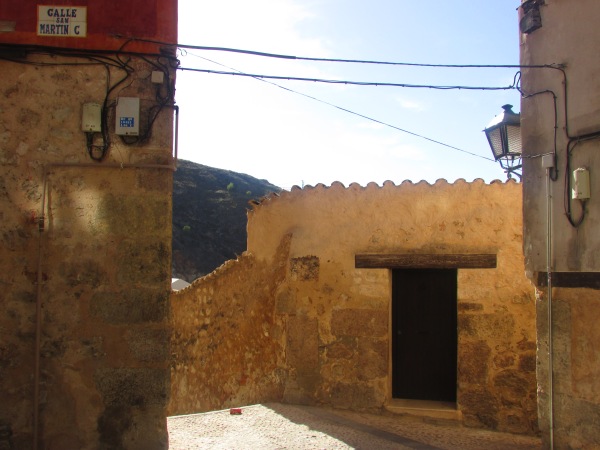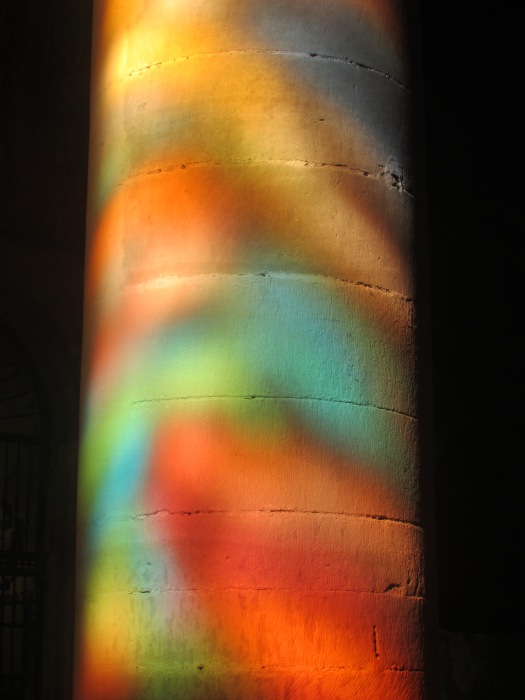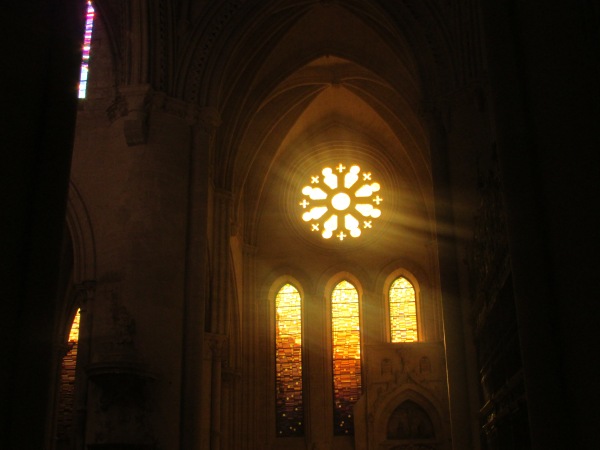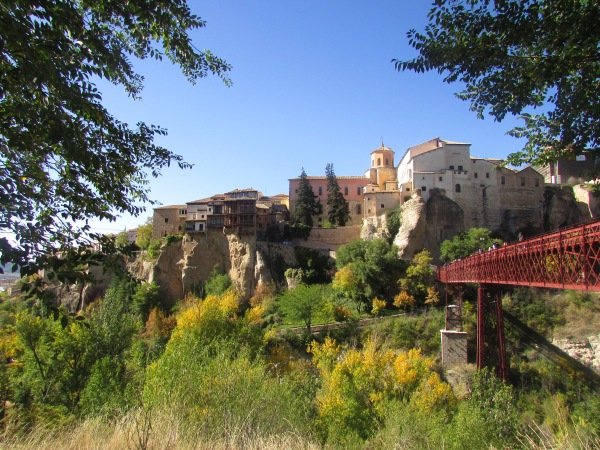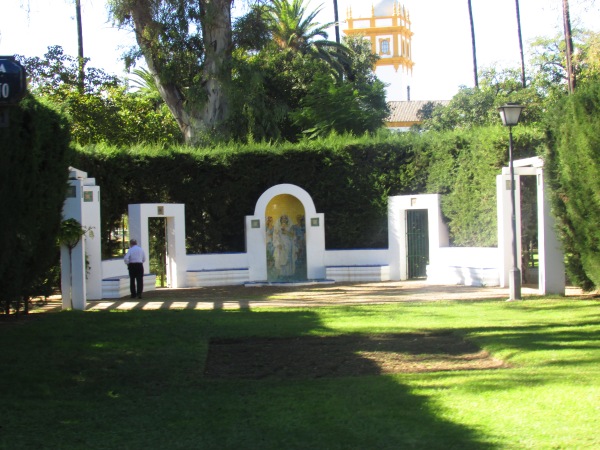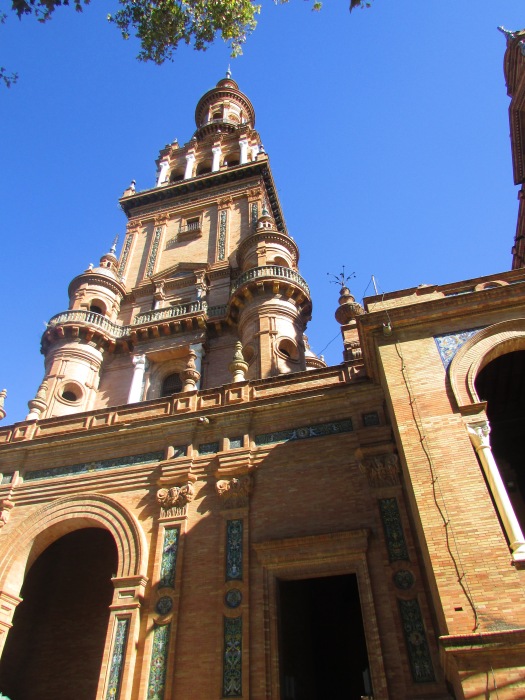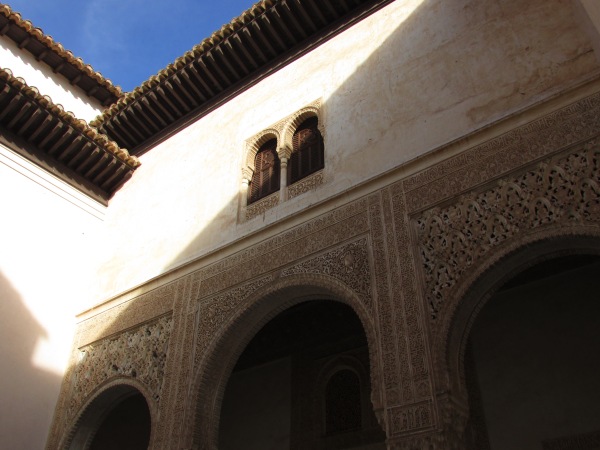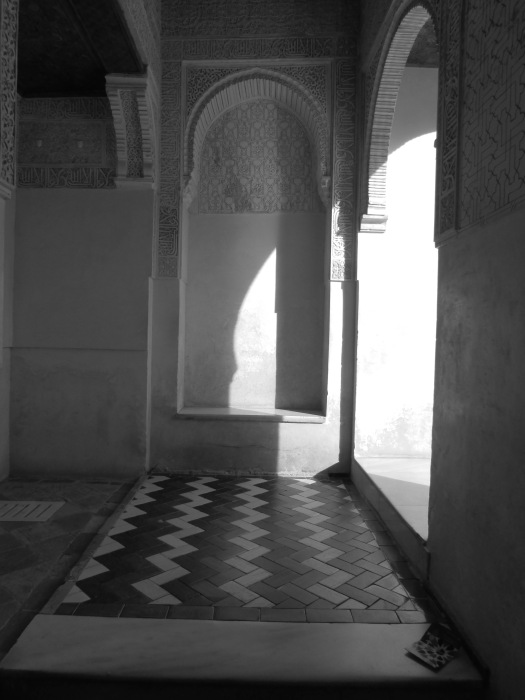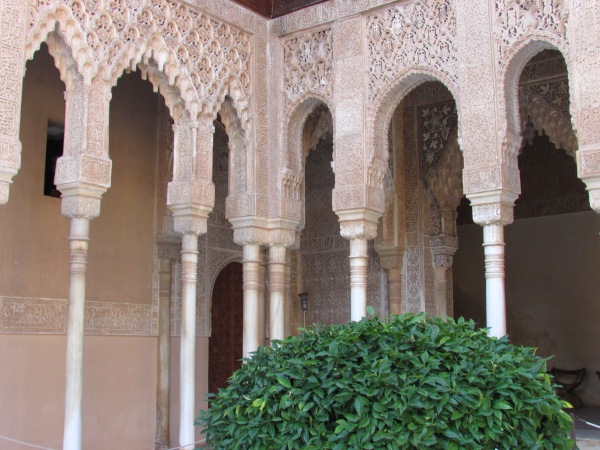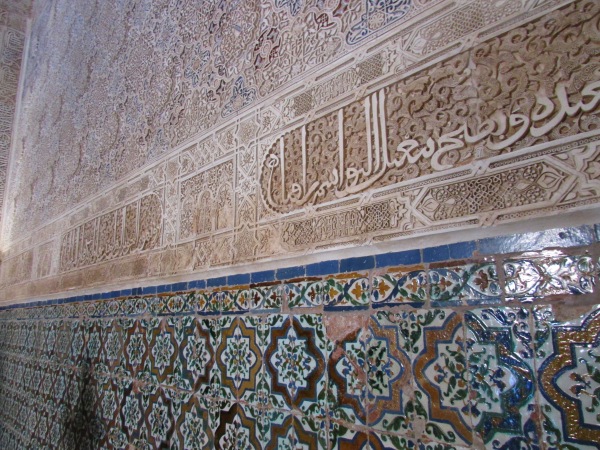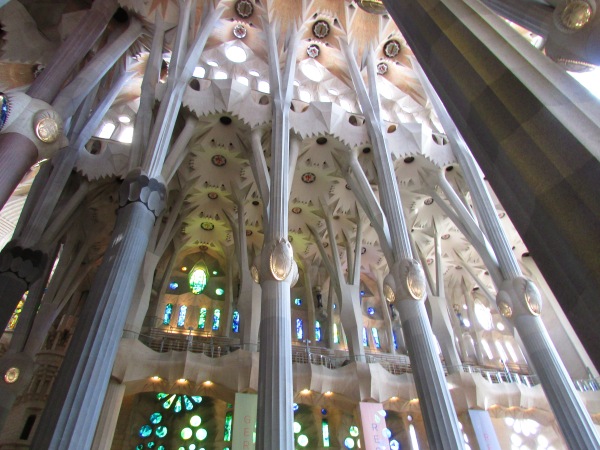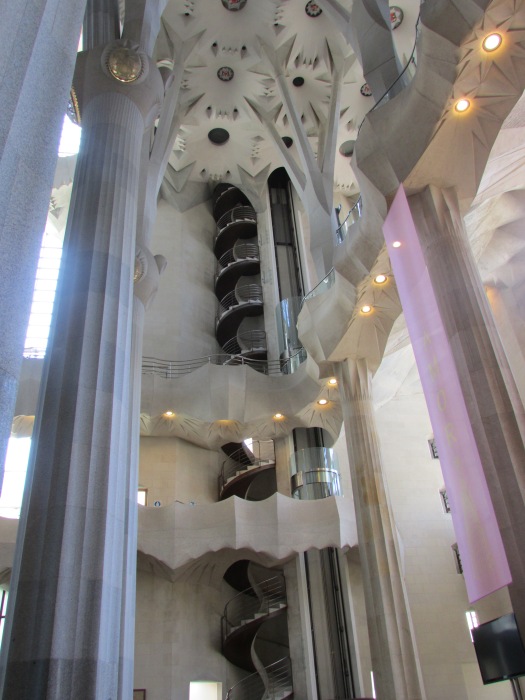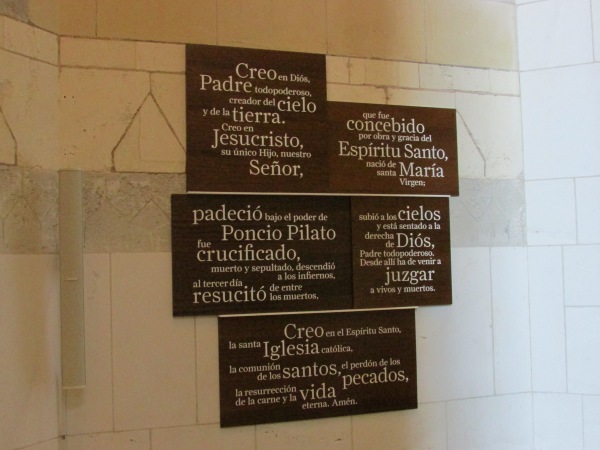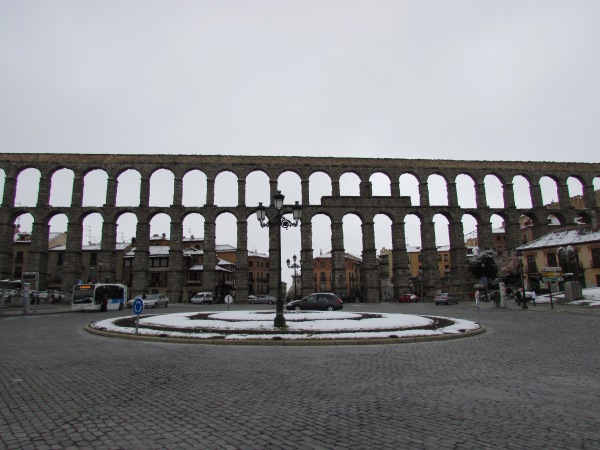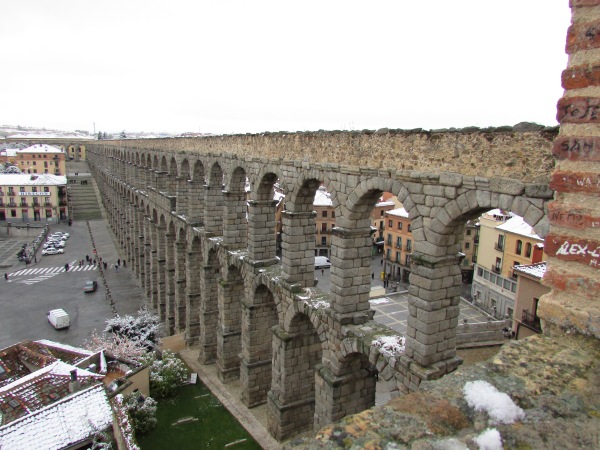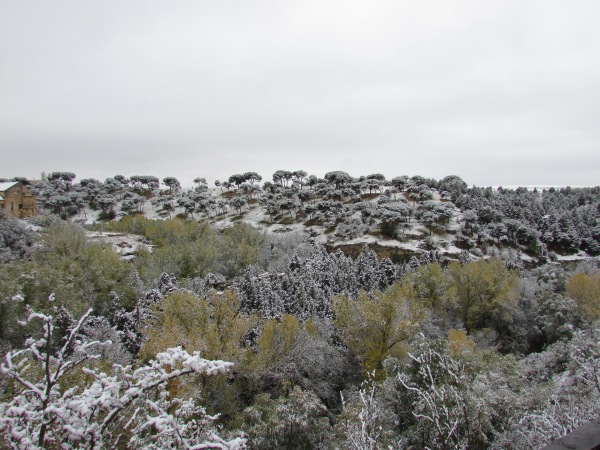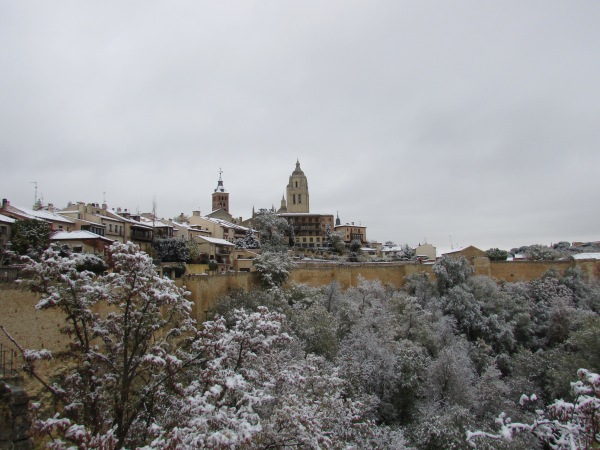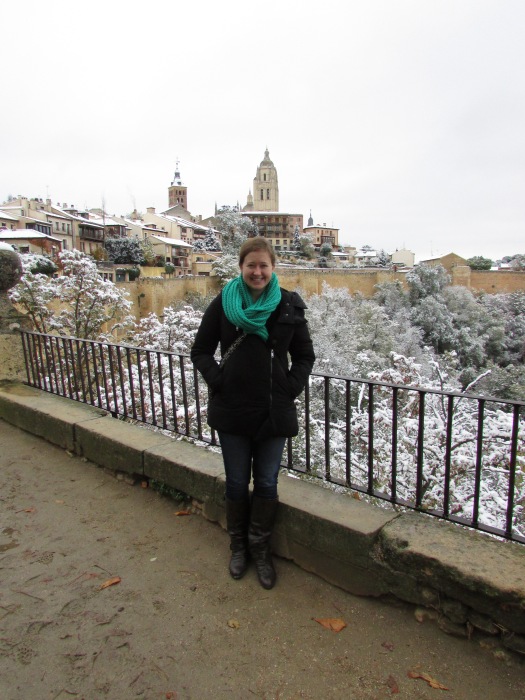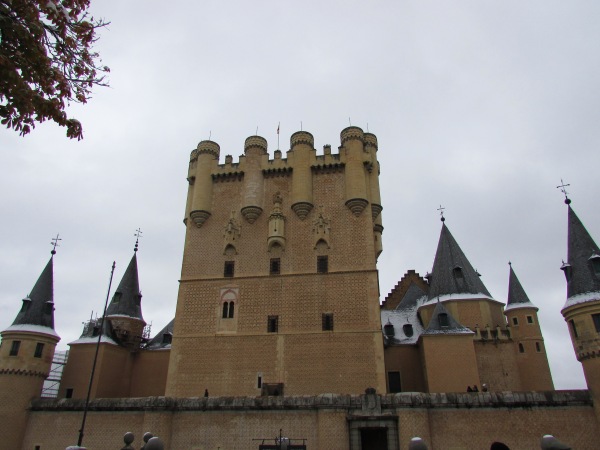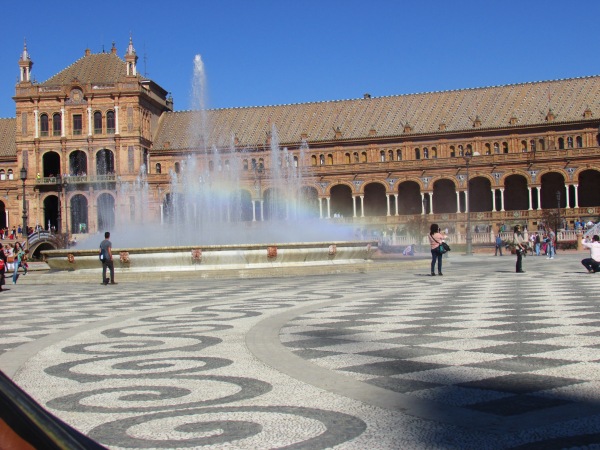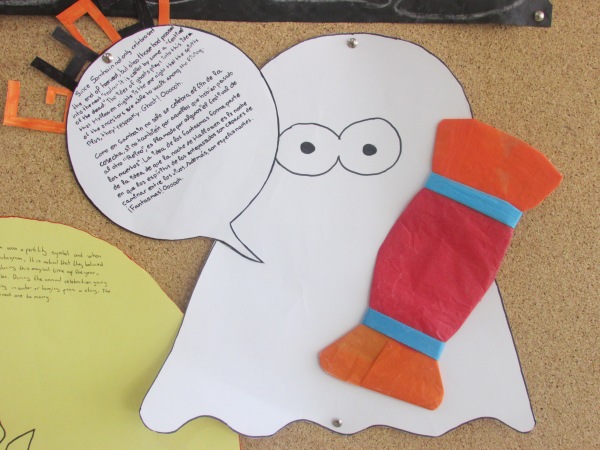Auxiliar de Conversacion
Cuenca
My time in Spain as a CIEE Language and Culture Teaching Assistant was spent in the autonomous community of Castilla-La Mancha, particularly the province of Cuenca. I lived in a small town about one hour from the capital of the province, which is, coincidentally, also named Cuenca. Many of my students often talked about taking weekend trips to Cuenca for shopping, family visits, etc., so I knew it was somewhere I would enjoy. One Sunday during October, my host family took me to visit this charming city. I was so lucky to be able to go on a beautiful fall day. The colors of the leaves on the trees were really quite stunning.
We began our morning on the outskirts of the historic part of the city. In case your unfamiliar with the setup of cities in Spain, most of them have a central historic area with the newer, urbanized area surrounding it. I know, I know, it makes perfect sense for a city to be organized this way. However, I would consider the U.S. equivalent (downtown) to be very different from a historic city center. In other words if you love history, be sure to go to the city centers.
We parked the car along the bottom of a gorge. The oldest part of the city is surrounded by several gorges formed by the Júcar and Huécar rivers. After a healthy 15 minute walk, we ascended into the historic center. It was a very calm Sunday morning, and not many people were out in the streets, but we could hear some noise coming from the Plaza Mayor. FYI, someone, somewhere was playing an acoustic guitar while we were walking (I love Spain).
Our first stop in the city center was the cathedral. The Cathedral of Our Lady of Grace and Saint Julian is in the center of the city, thus making it difficult to miss. Constructed from 1182 to 1270, the cathedral is the first Gothic style Cathedral in Spain. Certain features reminded me of Notre Dame in Paris. We decided to take a tour inside the cathedral. The mid-morning positioning of the sun allowed for some remarkable stained glass reflections. We also heard the haunting melodies of the monks singing somewhere in the cathedral. It was beautiful.
Our next stop was the Museum of Abstract Arts. The museum is housed in the Casas Colgadas (Hanging Houses). These buildings are what many people think of when they think of Cuenca. The houses were built in the 15th century right on the edge of the gorge. The houses now contain the museum, allowing tourists to not only enjoy the arts, but also the picturesque view across the gorge.
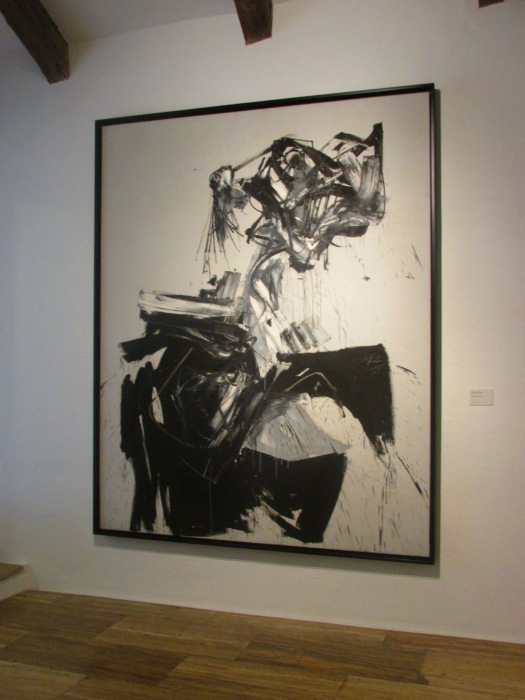
After enjoying the Casas Colgadas from the inside, we made our way to the Puente de San Pablo (Bridge of Saint Paul). This bridge was constructed from 1533 to 1589 over the gorge. The purpose of the bridge was to connect the city of Cuenca with the St. Paul Convent. The bridge allows a marvelous view of the Casas Colgadas.
After spending some time on the Puente de San Pablo, we headed back to the car. I was able to snap some pretty cool pictures along the way. There are lots of other things to do in Cuenca – these are just some of the highlights I want to share. So, if you ever find yourself in Castilla-La Mancha, make sure you visit Cuenca!
Have you ever been to Cuenca? If not, would you like to go? Which locations top your list? Also, if you’re interested in more of what Castilla-La Mancha has to offer, check out my post Castilla-La Mancha highlights.
“I am a passionate traveler, and from the time I was a child, travel formed me as much as my formal education.” – David Rockefeller
Photos by Megan Coffroth
A Sevillian Carriage Ride
This week I’ve been feeling particularly homesick…for Spain. I think it’s time for another post about one of my Spanish adventures. This post is about Sevilla (Seville), particularly the Maria Luisa Park. I visit Sevilla for the day with my host family. We drove from Granada to Sevilla in the morning and spent the afternoon in Sevilla. We then drove to Cordoba that evening. It was a whirlwind of a trip with so many new things to see!
Upon arrival in Sevilla, we walked around for a while before finding a horse drawn carriage tour. We spent the large majority of the tour in Maria Luisa Park. Stretching along the Guadalquivir River, the Maria Luisa Park is a large public park in the heart of Sevilla. At one point the park was used for the Ibero-American Exposition of 1929, and contains several buildings constructed specifically for the exposition. Enjoy the greenery and Plaza de España in Maria Luisa Park!
Sevilla is definitely on my list of places to visit when I return to Spain. As I mentioned, my host family and I only spent the afternoon there. However, there are so many museums and historic monuments that one could easily spend several days in this beautiful Andalusian city. Have you ever been to Sevilla? Do you have any suggestions for things to see? Let me know!
“There are no foreign lands. It is the traveler only who is foreign.” – Robert Louis Stevenson
Photos by Megan Coffroth
The Alhambra
Over the years, I’ve realized that I am definitely a history buff. The idea of standing in the same spot and seeing the same views as someone who lived over 1000 years ago never ceases to amaze me. Of all of the historical monuments I’ve visited, nothing mystifies me as much as the Alhambra. Built in Granada, Spain during the 9th century, the Alhambra was the royal residence of the last Muslim emirs of the Nasrid dynasty. If you’d like a more detailed history, check out my post My Spain Top 5. While I was thoroughly impressed by Gaudí’s Sagrada Familia, I was truly in awe of the Alhambra.
I was so blessed to be able to visit the Alhambra with my Spanish host family. Evidently you must get your tickets pretty far in advance if you want to visit the Alhambra, so thankfully my host mom ordered ours about two months before our visit. The morning of our visit, we took a bus from the center of Granada to the top of al-Sabika hill. We then waited in line for about twenty minutes before beginning our walking tour of the former military fortress. We spent the entire morning walking through the grounds and absorbing the enchanting atmosphere of the Alhambra.
The Alhambra is by far one of the coolest places I’ve visited. What about you? How do you feel about visiting historical sites?
“On such heavenly nights I would sit for hours at my window inhaling the sweetness of the garden, and musing on the checkered fortunes of those whose history was dimly shadowed out in the elegant memorials around.” – Washington Irving
Photos by Megan Coffroth
When all is said and done
It’s been a while since I’ve updated my blog. As you know, I was in Spain for about three months this fall. I returned home at the end of November, and my life has taken some pretty crazy turns since (but that’s a post for another day). Today I want to share with you the most important lesson I learned while abroad. I learned tons of life lessons during my Spanish experience, but there is one that topped them all: Never stop learning.

My role as an English Language and Culture Assistant was to assist the teachers of the bilingual program with their classes. The students in the bilingual program not only have an English class, but their math and technology classes are also taught in English. These students also have a French class ad their general language (Spanish) class. Trust me when I say it’s pretty humbling to be in a classroom full of 12 year-olds who can speak three languages…and are super excited and motivated about it.
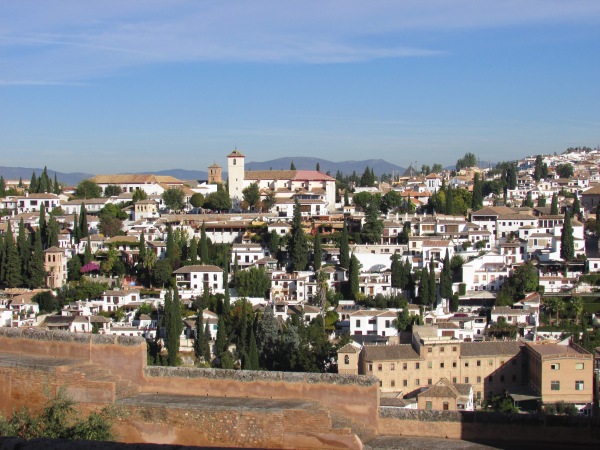
The lesson to keep learning was also reinforced through my personal studies of the Spanish language. While volunteering at the school, I also received three hours of Spanish lessons each week. Even though I have a degree in Spanish, these lessons still rocked my world. A large amount of the material was a review from my college courses, but the information I didn’t know was incredible. In just three short months, I learned so many slang terms and colloquial words. I can only imagine how much more I would have learned had I stayed longer. I’m making a conscious effort to listen to music in Spanish, read books in Spanish, and listen to television/radio broadcasts in Spanish so that I can continue to learn.
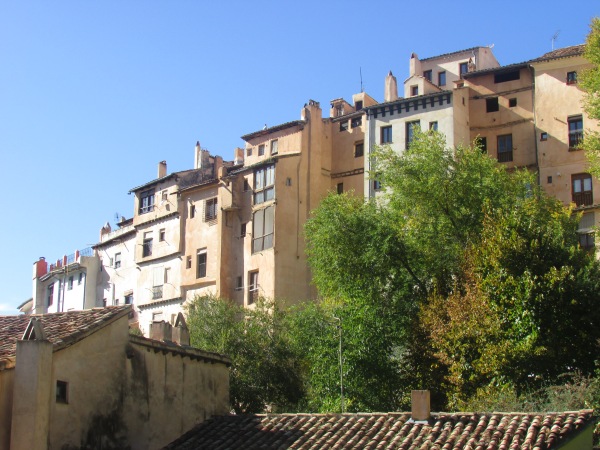
Both of the aforementioned experiences demonstrated to me the importance of learning, but the experience that inspired me the most was living with a host family. My host father not only spoke Spanish, but also English, French, and German. He consistently asked me questions about English and American culture because he wanted to learn. He also told me that his next goal in life is to learn to play the piano, and I have no doubt that he will do it. His motivation to learn has inspired me to be a lifelong learner.
It’s really difficult to sum up the experience of a lifetime into one blog post, and I’m sure I’ll draw inspirations for future blog posts from my time abroad, but for now, I’ll keep the lesson simple: Never stop learning.
Photos by Megan Coffroth and life1nmotion.tumblr.com
Let it snow! Let it snow! Let it snow! (in Segovia)
This post is short and sweet because I simply want to share the beautiful sights of Segovia. Last weekend my friend Bayley, another Auxiliar in Castilla-La Mancha, and I went to Segovia! Bayley and I met in Toledo back in September, but we hadn’t seen each other since. We didn’t really have a plan for the weekend, but we thought it would be fun to meet in Madrid and visit Segovia. Madrid has a high-speed AVE train that runs to Segovia several times a day, and the journey is only about 30 minutes. Upon our arrival in Segovia, we were met with SNOW! As much as we loved spending the day in the snow, it made us a little nostalgic for our Midwest winters back home. Nevertheless, we had an awesome time enjoying the sights, shopping, and food in Segovia, Spain!
Oh! I also forgot to mention that Segovia has a 2,000 year old Roman Aqueduct (here’s your history lesson for the day). The aqueduct was built toward the end of the 1st century or the beginning of the 2nd century, and consists of about 25,000 granite blocks. The amazing thing is that it has no mortar! The aqueduct is 818 meters long. In a city full of history, the Aqueduct is the principle tourist attraction in Segovia.
 Segovia Cathedral – The last Gothic cathedral built in Spain!
Segovia Cathedral – The last Gothic cathedral built in Spain!
Alcazar de Segovia – Where Isabella I was crowned the Queen of Castile and León
This wraps up my adventure to Segovia (Segovian Adventure?). Have you been to Segovia? What were some of your favorite sights? Did you try the famous cochinillo (roasted piglet)? Let me know! Meanwhile, enjoy one of my favorite songs about snow!
Photos by Megan Coffroth
Hitting the Wall
I’ve studied the Spanish language for a long time. After my year of kindergarten, my mother enrolled me in summer enrichment classes at elementary school. (That’s how you know your parent is a teacher. You take additional classes. Not because you need to, but because you can.) I continued to take summer Spanish classes each year until fifth grade. Sadly, Spanish classes were not offered during the school year, nor during the summer, throughout my middle school years. Once I reached high school, I continued my Spanish classes for four more years. I took a placement exam upon entering college and decided to minor in Spanish. Throw in a study abroad trip, more classes, and Spanish major and you have…a lot of years studying Spanish.
Now I am living in Spain. With all of my studying and total immersion now, I should be fluent right? Wrong. Don’t get me wrong, my Spanish has improved exponentially as a result of being here, but I’ve still much to learn. To be completely honest, I’m writing this post because this week has been a struggle. I’ve had the most difficult time understanding simple things. Someone says something, and I have no idea what he or she is talking about. After frantically typing the words into my translator, I feel like an idiot. What is happening? To quote David after his trip to the dentist, “Why is this happening to me?!”
I have several other friends who are living in Spain right now, and their social media messages have echoed my same sentiments.
“Ugh! This week, my brain straight up gave up!”
“I feel like my Spanish skills are at a stand still…”
“…I try to speak Spanish sometimes, people look at me like I’m a crazy person”
At least I’m not the only one. I’m hoping that this will pass. What can I do to speed along the process? I began researching to see if there’s a specific cause for this problem or when it falls on the timeline of learning another language. I couldn’t find anything. However, what I did find was very helpful. The article What to do when you hit a plateau in your language studies, by Camden Luxford, has some very helpful tips for those wishing to become fluent in another language. Among these tips are, reviewing the fundamentals, utilizing flashcards, reading as much in the target language as you can, learning another language, setting a goal for yourself, and making sure that those around you continue to correct your speech.
It’s reassuring to know that other people have plateaued in their language studies, and that there are ways to overcome it. So bring it on reflexive verbs, personal pronouns and indirect objects. I’m ready.
“The more I read, the more I acquire, the more certain I am that I know nothing.” – Voltaire
This is Halloween
For the past month or so, the students and teachers at the school have been preparing for Halloween. Halloween is not a big tradition in Spain like it is in the United States, so it’s been really fun to be able to watch the students get into the Halloween spirit! The students in the first, third and fourth sections of the bilingual program made a horror film including their own adaptation of Thriller. The students in the second section of the bilingual program made Halloween decorations for the school’s main entrance. The decorations consisted of popular Halloween symbols and explanations of their histories in English and Spanish. Today we celebrated the culmination of our efforts during the “recreo” or break period. Today’s festivities included the premiere of the video, a viewing of the decorations and a Jack-O-Lantern contest! Here are some photos! Happy Halloween!
“Double, double, toil and trouble; Fire burn and cauldron bubble!” – William Shakespeare
Photos by Megan Coffroth
There’s a fungus among us
Each week I ask my students what they did over the weekend, and a good 25% percent of them respond with “Buscar a los misclos” or “Buscar a los setas”. After some research on my end, I found out that a “seta” is a mushroom. Hmm… I always thought mushroom was “champiñón”. I finally asked my students, “What is the difference between champiñón, misclo, and seta?” They told me that they are different species of mushrooms. To make a long story short, many of my students go with their families to look for mushrooms on the weekends. Since this isn’t something I normally do in the U.S. I was intrigued, and began to do some research on the topic. Champiñónes, setas, and misclos are all part of the cuisine in my region, and boy are they delicious.
Champiñón
A champiñón is what you have when you think of a typical mushroom that you would eat on a pizza or salad. The Lactarius deliciosus species (1 point for utilizing my biological studies!) is an edible mushroom that is one of the most commonly consumed mushrooms in the world.

Misclo
A misclo is actually a niscalo (misclo is a slang term used by people in my region of Spain). With a funky orange color, this mushroom scared me at first. I thought that perhaps it was poisonous, but it isn’t. However, it is a unique European species that can’t be found in North America. This mushroom is considered a delicacy, and thus, the reason that many people hunt for them on the weekends. They are delicious. My host family usually grills them and serves them with olive oil, lemon, and various spices.

Seta
Like champiñón, seta translates directly to mushroom. However, I have found that people here are referring to a much larger mushroom, Boletus edulis, when they talk about setas. These are also quite delicious!

What about you? Do you like mushrooms? Have you ever tried a misclo? Are there other exotic mushrooms that are delicious?
“It’s easy to impress me. I don’t need a fancy party to be happy. Just good friends, good food, and good laughs.” Maria Sharapova
Ea
Welcome to Spain….now forget everything you thought you knew about the Spanish language. While I can definitely say that my Spanish has improved exponentially as a result of being here (I’m much better at the pretérito perfecto and the pretérito imperfecto), I still have a long way to go (darn subjunctive!). Here are some insights that I’ve had with the Spanish language (or Castellano because it’s not called Spanish when you’re in Spain).
1) Vosotros actually exists
I’ll never forget the relief I felt in high school and college when I found out that the vosotros verb conjugations would not be included on an exam. One less thing to learn! Many students in the United States do not learn the vosotros verb conjugations because they are not used in Latin America (as Latin American speakers use ustedes when addressing a group formally or informally). Oh how I wish I would have learned vosotros. Turns out vosotros is a subject pronoun used only in Spain. The vosotros conjugation of a verb is informal and refers to a group of two or more people. After a few weeks of hearing vosotros over and over, I’m getting the hang of it. Kind of.
2) Past Participles
This gets a little technical if you haven’t studied the Spanish language, but bear with me. Whenever you conjugate a compound verb, you have the conjugation with the participle. For example if I want to say, “I have eaten already”
- He comido ya.
Or, “I had played basketball.”
- Había jugado baloncesto.
Notice that the participles in these examples are -ido and -ado.
Many people in my region of Spain speak very quickly and don’t pronounce the “D.” Imagine my confusion when I heard the words “comio” (sounds like the past tense of eat) and “jugao” (no idea what this means). I finally asked a student about it and she told me that no one really pronounces the “D” in this region.
3) Slang, y’all.
Turns out there is Spanish slang just like there’s slang in the U.S. Now let’s take it one step further. Imagine that your town has words that are only used in that town….
- Guacho/a: Same as chico/a or muchacho/a
- Ea: This is said when someone doesn’t know what to say or how o respond. It can also mean “I don’t know” “fine” or “okay”. For example, some can respond to “How are you doing today?” with “Ea.”
- Madre mía: I can’t help it, but I always think, “Mamma Mia!” when here this. This means “Oh my!” or “Good grief!” Also, I’m pretty sure this is common in the rest of Spain, but I wanted to include it on my list too.
- Many “palabras rotas.” I’m not going to type them. If you have questions, you can ask me.
Well, theses are just a few examples of some of the ways I’ve had to learn, or rather re-learn, Spanish. I’ve enjoyed learning all of the different colloquial terms, and I’m sure I will learn plenty more before I leave. Have you ever been to Spain or Latin America? How was the Spanish similar or different to what you learned in school?
“To reach a goal you have never attained before, you must do things you have never done before.” Richard G. Scott


